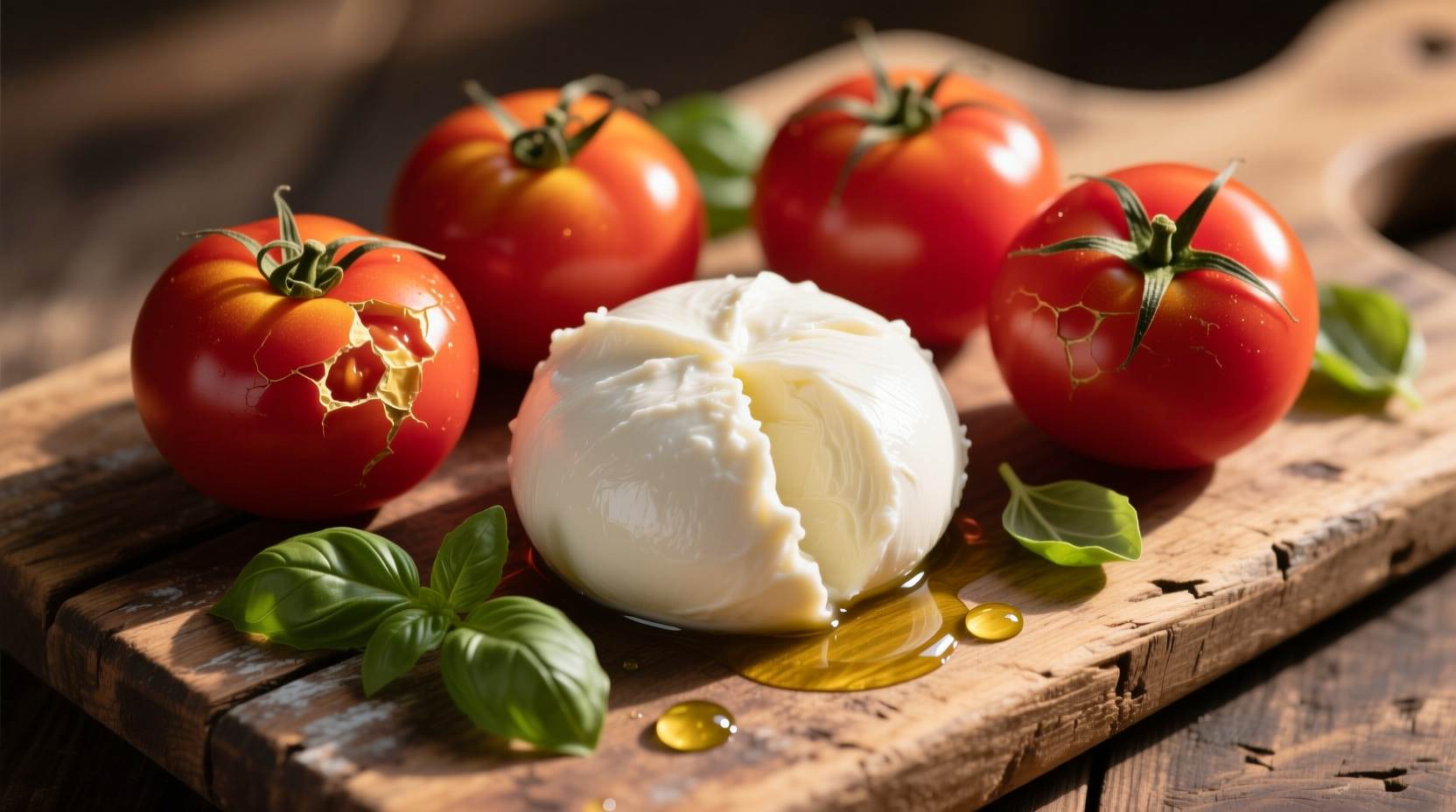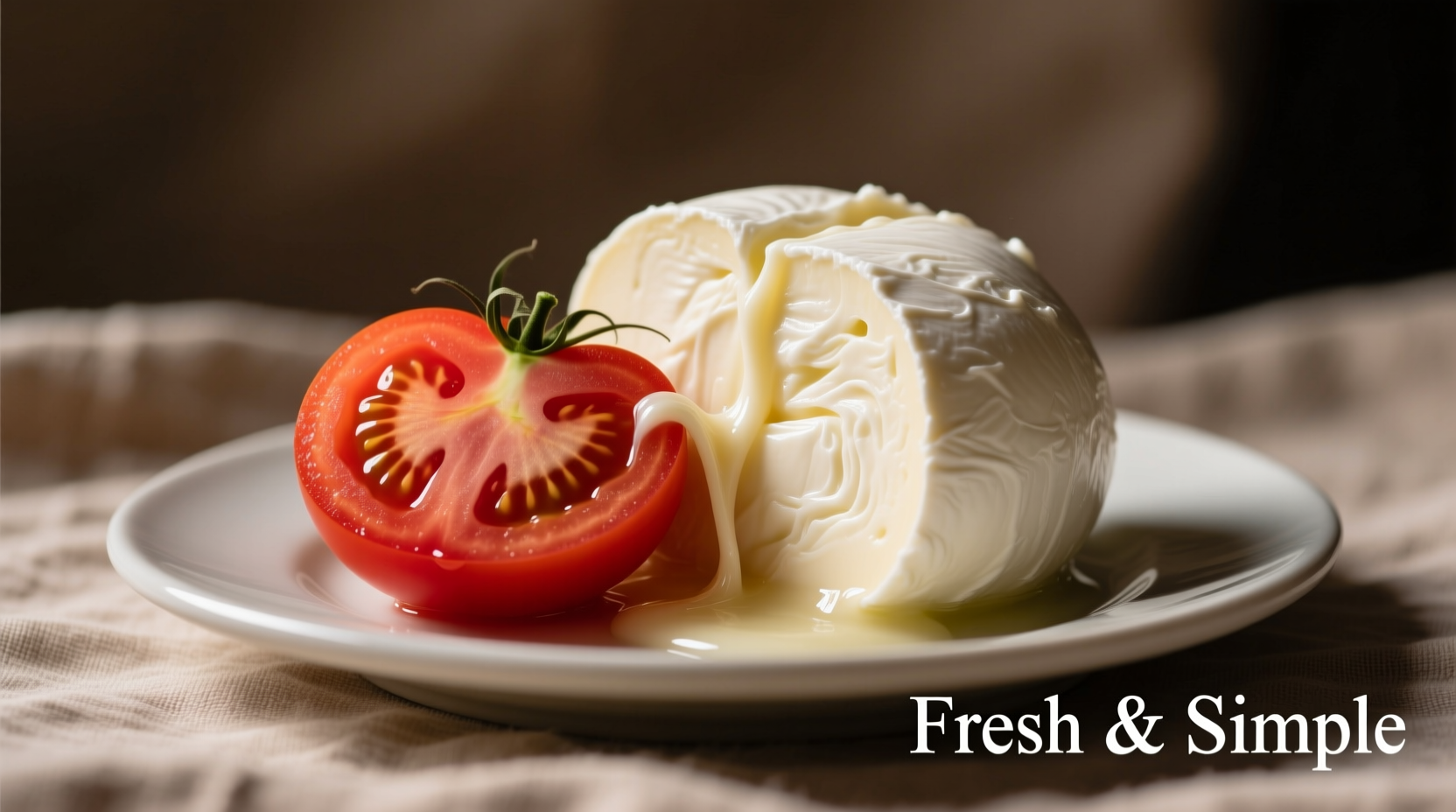Discover why this timeless combination works so well, how to select the best varieties, and professional techniques to maximize flavor in your kitchen. Whether you're crafting a simple salad or elevating your pizza game, understanding the science and tradition behind mozzarella and tomato will transform your cooking.
The Science Behind the Perfect Pairing
Food chemistry explains why mozzarella and tomato create such a satisfying combination. The lactic acids in fresh mozzarella interact with the citric and malic acids in tomatoes, creating a balanced flavor profile that neither ingredient achieves alone. According to research from the University of Naples, this pairing activates multiple taste receptors simultaneously, enhancing the perception of both sweetness and umami.
| Ingredient | Primary Acids | pH Level | Flavor Contribution |
|---|---|---|---|
| Fresh Mozzarella | Lactic acid | 5.0-5.5 | Creamy, mild, slightly tangy |
| Ripe Tomato | Citric, malic acids | 4.3-4.9 | Bright, sweet, umami-rich |
This complementary acidity creates what Italian chefs call "the flavor bridge"—a sensory experience where neither ingredient overpowers the other. The fat content in mozzarella (typically 45-50%) helps carry and mellow the tomato's acidity, while the tomato's natural sugars balance the cheese's subtle saltiness.

Choosing the Right Varieties
Not all mozzarellas and tomatoes work equally well together. Understanding the characteristics of different varieties helps you create the perfect balance:
Mozzarella Options
- Fior di Latte (cow's milk) - Mild flavor, firm texture ideal for cooking
- Buffalo Mozzarella (DOP certified) - Richer, creamier, with distinctive tang
- Smoked Mozzarella - Adds complexity to grilled preparations
- Bocconcini - Small balls perfect for salads and skewers
Tomato Selection Guide
Seasonality matters most—July through September delivers peak tomato quality in most regions. Look for these varieties:
- San Marzano - Elongated shape, low moisture, ideal for sauces
- Heirloom varieties - Complex flavor profiles with varying acidity levels
- Cherry tomatoes - Higher sugar content, perfect for quick preparations
- Beefsteak tomatoes - Thick slices hold up well in sandwiches and paninis
Historical Timeline of This Classic Pairing
The combination of mozzarella and tomato has deep roots in Italian culinary history. Understanding its evolution provides context for modern preparation techniques:
- 16th Century - Tomatoes introduced to Europe from the Americas, initially grown as ornamental plants
- 18th Century - Tomatoes gradually accepted as food in southern Italy, particularly around Naples
- 1889 - Creation of Pizza Margherita, featuring mozzarella, tomato, and basil to represent the Italian flag
- Early 20th Century - Caprese salad emerges on the island of Capri as a simple preparation for local ingredients
- Post-WWII - Italian culinary traditions spread globally, popularizing this pairing worldwide
Professional Preparation Techniques
Master these techniques to elevate your mozzarella and tomato dishes from ordinary to exceptional:
Temperature Matters
Remove both ingredients from refrigeration 30-45 minutes before serving. Cold temperatures mute flavors and cause mozzarella to become rubbery. The ideal serving temperature (60-65°F / 15-18°C) allows both ingredients to express their full flavor profiles.
Slicing Methods
- Use a serrated knife for tomatoes to prevent crushing
- Cut mozzarella with a non-serrated knife dipped in cold water
- For Caprese: Alternate 1/4-inch slices of both ingredients
- For salads: Tear mozzarella by hand for better texture absorption
Seasoning Strategy
Apply salt to tomatoes first and let sit for 10 minutes before adding mozzarella. This draws out excess moisture from tomatoes while enhancing their natural sweetness. Finish with flaky sea salt on the mozzarella just before serving to prevent it from becoming watery.
Creative Applications Beyond Caprese
While the classic Caprese salad remains popular, this versatile pairing shines in numerous preparations:
Grilled Perfection
Brush tomato slices with olive oil and grill for 2-3 minutes per side until char marks appear. Pair with fresh mozzarella and pesto for a warm salad that showcases caramelized flavors. The Maillard reaction during grilling creates new flavor compounds that complement the cheese's lactic notes.
Pasta Pairings
Add fresh mozzarella pearls to pasta dishes during the last minute of cooking, allowing them to melt slightly while maintaining their shape. Cherry tomatoes roasted at 300°F (150°C) for 20 minutes develop concentrated sweetness that balances beautifully with creamy mozzarella.
Unexpected Combinations
Try these professional chef recommendations:
- Mozzarella, tomato, and watermelon salad with mint and balsamic reduction
- Tomato confit with burrata (a richer cousin of mozzarella)
- Mozzarella-stuffed tomatoes baked with herb breadcrumbs
Common Mistakes to Avoid
Even experienced cooks make these errors when working with this classic pairing:
- Using refrigerated ingredients - Chilled mozzarella and tomatoes lose flavor complexity
- Adding salt too early to mozzarella - Causes excess moisture release and texture degradation
- Choosing underripe tomatoes - Lacks sufficient sugar to balance the cheese's acidity
- Over-dressing the dish - High-quality ingredients need minimal enhancement
Storage and Freshness Tips
Proper storage extends the life of both ingredients while maintaining optimal flavor:
Mozzarella Storage
Store fresh mozzarella in its liquid brine in an airtight container. Change the water daily for up to 5 days. For longer storage, freeze mozzarella in brine for up to 2 months (best used for cooking rather than fresh applications). According to the University of California's Agricultural Department, freezing disrupts the cheese's protein structure, making it less suitable for fresh preparations but still excellent for melting.
Tomato Preservation
Never refrigerate ripe tomatoes—cold temperatures destroy flavor compounds. Store at room temperature stem-side down. For overripe tomatoes, remove seeds and freeze pulp for sauces. The USDA Food Safety and Inspection Service confirms that freezing preserves nutritional content while extending usability.
When This Pairing Doesn't Work
Understanding the limitations of this classic combination prevents culinary disappointment:
- Winter tomatoes - Often lack sufficient sugar content to balance the cheese
- Aged cheeses - Aged mozzarella (like "mozzarella stagionata") overpowers delicate tomato flavors
- Overly acidic preparations - Adding excessive vinegar competes with natural acidity balance
- Cooking applications requiring firm texture - Fresh mozzarella releases too much moisture for certain baked dishes
For these situations, consider alternatives like burrata with roasted tomatoes, or use low-moisture mozzarella for cooked applications.
Final Thoughts
The magic of mozzarella and tomato lies in its simplicity and balance. By understanding the science behind their interaction, selecting quality seasonal ingredients, and applying proper preparation techniques, you can create dishes that showcase the best of both ingredients. This classic Italian pairing continues to inspire chefs worldwide because it demonstrates how two simple components can create something far greater than the sum of its parts.











 浙公网安备
33010002000092号
浙公网安备
33010002000092号 浙B2-20120091-4
浙B2-20120091-4